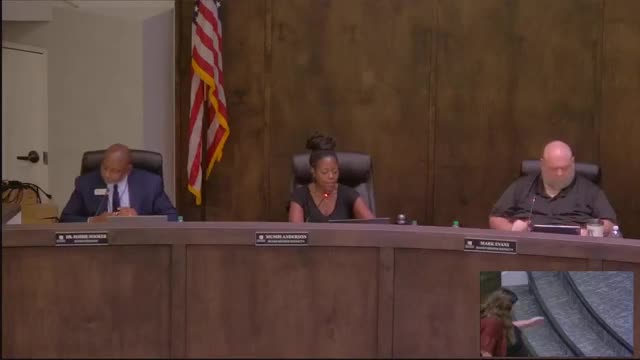School district shifts to eco-friendly buses amid challenges
August 09, 2024 | Clarke County, School Districts, Georgia
This article was created by AI summarizing key points discussed. AI makes mistakes, so for full details and context, please refer to the video of the full meeting. Please report any errors so we can fix them. Report an error »

During a recent government meeting, the focus was on the ongoing school bus project initiated by the Clarke County School District (CCSD) in 2018, which aims to transition away from diesel buses. Jim Gurley presented an overview of the project, highlighting the district's efforts to incorporate alternative fuel sources, particularly propane and electric buses.
Since 2020, CCSD has purchased propane buses using a combination of bond money, general funds, and alternative fuel grants. Currently, the fleet consists of 153 buses, with 33 operating on propane. Plans are in place to acquire a few gasoline buses for long-distance travel, as diesel buses are being phased out. The fleet has logged 1.9 million miles during the 2023-2024 school year, with an average of 70 miles per day per bus.
Gurley discussed the challenges and opportunities presented by electric buses, which offer significant environmental benefits, including reduced emissions and lower operational costs. However, the upfront costs for electric buses range from $320,000 to $500,000, and the district has faced hurdles in securing funding for additional units beyond the initial ten requested. The need for charging infrastructure, estimated at over $220,000 for a single charger, adds to the financial considerations.
Concerns were raised about the limited range of electric buses, which currently stands at 80 to 120 miles, compared to propane buses that can travel 300 to 340 miles and gasoline buses that can reach 650 miles. This limitation necessitates careful route planning and monitoring to ensure operational efficiency.
Gurley also addressed safety issues related to electric buses, particularly the risks associated with lithium-ion batteries, which have been linked to numerous fires in other cities. While local fire departments have developed response plans, the potential for thermal runaway remains a concern.
Overall, the meeting underscored the district's commitment to sustainability while navigating the complexities of transitioning to alternative fuel sources for its school transportation needs. The future of the project hinges on securing additional funding and addressing the logistical challenges posed by electric bus technology.
Since 2020, CCSD has purchased propane buses using a combination of bond money, general funds, and alternative fuel grants. Currently, the fleet consists of 153 buses, with 33 operating on propane. Plans are in place to acquire a few gasoline buses for long-distance travel, as diesel buses are being phased out. The fleet has logged 1.9 million miles during the 2023-2024 school year, with an average of 70 miles per day per bus.
Gurley discussed the challenges and opportunities presented by electric buses, which offer significant environmental benefits, including reduced emissions and lower operational costs. However, the upfront costs for electric buses range from $320,000 to $500,000, and the district has faced hurdles in securing funding for additional units beyond the initial ten requested. The need for charging infrastructure, estimated at over $220,000 for a single charger, adds to the financial considerations.
Concerns were raised about the limited range of electric buses, which currently stands at 80 to 120 miles, compared to propane buses that can travel 300 to 340 miles and gasoline buses that can reach 650 miles. This limitation necessitates careful route planning and monitoring to ensure operational efficiency.
Gurley also addressed safety issues related to electric buses, particularly the risks associated with lithium-ion batteries, which have been linked to numerous fires in other cities. While local fire departments have developed response plans, the potential for thermal runaway remains a concern.
Overall, the meeting underscored the district's commitment to sustainability while navigating the complexities of transitioning to alternative fuel sources for its school transportation needs. The future of the project hinges on securing additional funding and addressing the logistical challenges posed by electric bus technology.
View full meeting
This article is based on a recent meeting—watch the full video and explore the complete transcript for deeper insights into the discussion.
View full meeting
